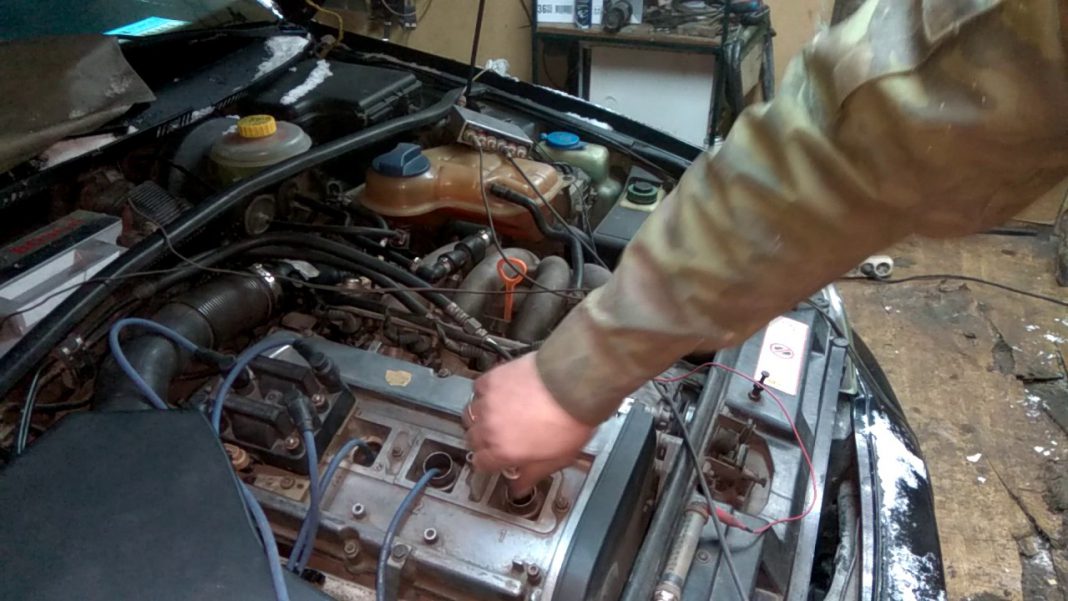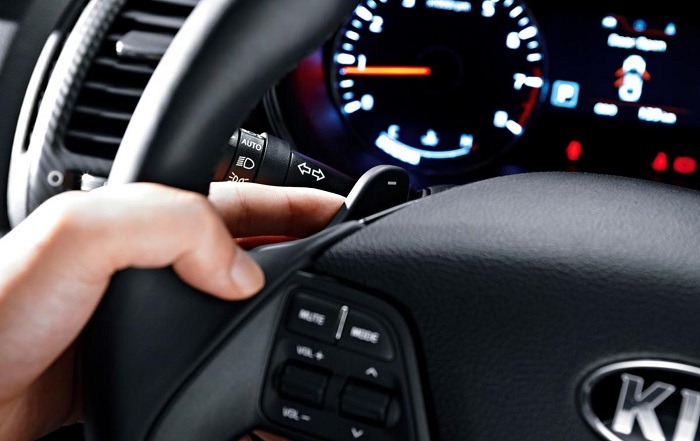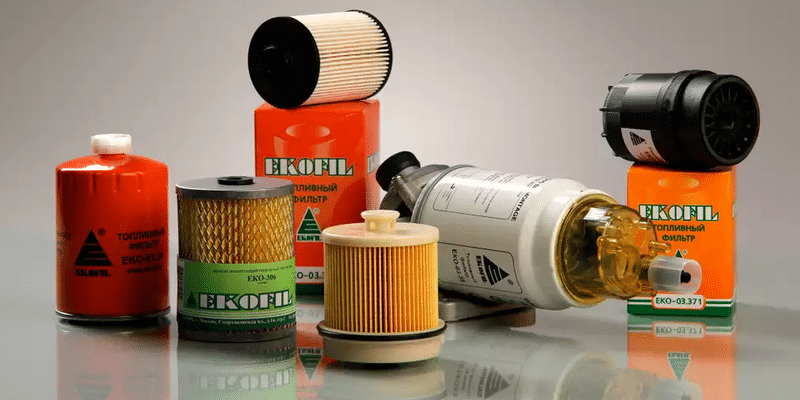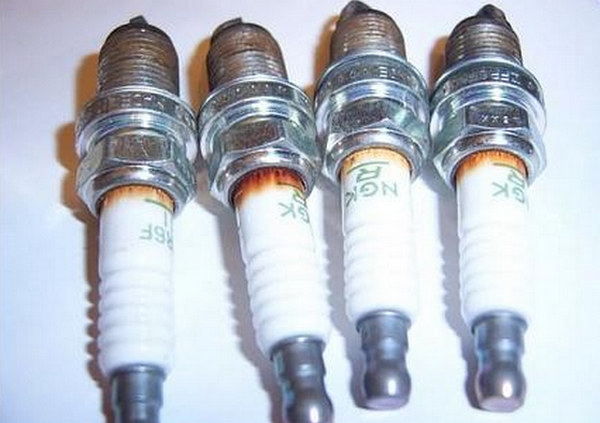Engine jerking when pressing the gas pedal. When you hit the gas hard, the engine jerks.
During the operation of various vehicles, drivers often encounter the fact that the engine starts to twitch and jerks when hard pressing on the gas pedal. Such and on Idling if you hit the gas hard. At the same time, in normal mode (pressing the accelerator is smooth), noticeable jerks are often not observed.
In this article, we will talk about why such jerks occur and the car twitches during acceleration, which symptoms clearly indicate that the engine has started to twitch, and how to identify and fix the problem.
The car twitches when you sharply press the gas: why is this happening

First of all, it should be understood that jerking and jerking when pressing the gas is most often associated with the quality of the fuel-air mixture. The mixture may be lean or enriched.
A fairly common situation during the operation of the vehicle is when dips occur when the gas pedal is pressed, the engine stalls when re-gassing, power unit does not gain momentum, chokes, etc.

Your almost new car With injection engine suddenly, for no apparent reason, began to twitch during acceleration? There can be many reasons for such a nuisance, but here we will mainly consider those that are related to the operation of the injection engine. This type of engine has a number of significant advantages over a carburetor engine. But at the same time, it is structurally more complicated, therefore, there can be much more reasons for its malfunctions. In particular, the "injector" has an electronic control unit ("electronic brains") that control fuel injection, focusing on the readings of various sensors (controllers) of the engine condition. There are quite a few of these controllers, but twitching during acceleration of the machine may be, first of all, due to a malfunction of the following of them:
- Throttle Position Sensor (TPS)
- Mass Air Flow Sensor (DMRV)
- Crankshaft position sensor (DPKV)
Attention. The most unpleasant consequences occur during improper operation, or - God forbid - failure of the DPKV. In this case, the injector will stall, and you will not be able to start it in any way. Therefore, if there are suspicions that engine jerks are associated with DPKV, it is best to stop and check the operation of this sensor yourself.
To do this, connect a car oscilloscope to the output of the DPKV (located at the tide of the oil pump) and start the engine. With a good DPKV, clear pulses of the injector operation will be visible on the oscilloscope screen. If the pulses are blurred (or not visible at all), then it is better not to take risks and immediately get to the service station, where you can carry out computer diagnostics of this and, if necessary, all other controllers. Such diagnostics can also detect malfunctions in the operation of the oxygen sensor (lambda umbrella) or the electric injector valve, which are also a common cause of engine twitching.
The second group of causes of jerks in the operation of the engine are malfunctions in the injector ignition system. These include incorrect operation of the ignition module, as well as spark plugs, ignition coil and high voltage wires. Therefore, experienced drivers always have a set of spark plugs and an ignition coil in stock, which most often fail.
Last big group The reasons for the jerking of the car are various malfunctions of its fuel system, for example, irregular operation of the gasoline pump due to clogged fuel filters or the formation of air locks in the fuel hoses. A specific malfunction of the injectors, leading to jerks of the car during acceleration, is clogging of the fuel injectors. They, having very small holes, when using low-quality gasoline, often become clogged and require cleaning. This can be done on your own, using the tips of specialists, but it is better to clean the nozzles with ultrasound at the service station.
A well-maintained car is the key to driving safety on the road. However, unexpected interruptions during movement can be especially troublesome. Such problems include the situation when the car twitches during acceleration, or there are interruptions when driving at low speeds.
The best way to avoid surprises is prevention and proper diagnosis. With their help, you can do without expensive repairs.
It is difficult to diagnose with an unevenly running car that is running at idle. The correct solution would be to detect interruptions during its movement. For this, a straight section of the road without heavy traffic is selected.
While driving, turn on the gears one by one. At each included stage, we sharply squeeze the accelerator pedal. The power plant must be sensitive to all the efforts of the driver. In those cases when the car twitches when you press the gas pedal or does it without any effort, then the vehicle needs a more thorough inspection of individual components. It all depends on the specific behavior of the car.
Jerky motion during acceleration
The problems of uneven movement during a high-speed maneuver most often lie in the unstable flow of fuel into the float chamber. Gasoline is produced faster than it enters it. The supply of fluid to the fuel pump is intermittent.

You need to solve the problem by opening the fuel pump cover. We carry out a visual inspection of the hole with the valve. The seal is often in the wrong place. This lack of sealing leads to a complication of the supply of gasoline to the system, because of this, the car twitches while driving. The necessary operation is to replace the valve and resume hermetic operation. If there is a sealant at hand, then you can do it yourself.
Unstable movement at low speed
The troubles that arise while driving at low speed are the result of incorrect operation of the nozzles. The culprit is also often an unfixed wire bundle that can fray if it rubs against the fuel lines while driving.

Bare wires are closed on the tubes. In this case, the nozzles are turned off, and the stability of the injection suffers. If the wires are the culprits for the fact that the car twitches when driving at low speeds, then it is better to change the harness. After replacement, you need to fix them on the case to avoid a recurrence of the problem.
Instability associated with pressing the accelerator
At a time when the driver "presses the gas", the car pulls through, this may be due to the inefficient operation of the vacuum ignition angle regulator. This element is located in the distributor.
Since gasoline burns at the same speed, the driver tends to increase the engine speed and presses the pedal, the engine needs to ignite the air-fuel mixture faster. The work of the vacuum regulator begins just with an increase in speed above 1500-2000 rpm. The opening throttle valve at the same time pulls the bearing due to the resulting vacuum, which increases the ignition timing.

To diagnose the operation of the vacuum regulator, it is enough to remove the hose and tightly cover it with your hand. You will hear how the pull-in effect works. When air enters, no vacuum is formed, the tightness is broken, and when starting off, the car twitches.
The next culprit for why the car twitches on the go is the sprayer. accelerator pump. You can see the performance of the element after removing the diffusers. Then you need to press the lever and look at their work. A failure means that one of the instability problems has been detected.
To repair the mechanism, you will need to dismantle it and remove the ball, holding the underside with pliers carefully so as not to deform the case. Using a compressor, we blow through the channels and, having assembled it, install it without gaps. The resulting gaps will lead to unwanted vacuum. Correct operation and cleanliness of blowing is evaluated by a long straight jet.
A rare case with diaphragm
A fault with the accelerator pump diaphragm is rarely detected. Only the spring remains in the structure, and its shelter disappears. You have to make a homemade button from improvised means. When such a problem is identified at the station, auto mechanics suggest completely changing the carburetor so as not to mess with the little things.
Culprit-filters
When the car twitches when driving at low speeds or high speeds, then you need to remember how long ago they changed fuel filters. In diesel power plants, as a rule, they put a couple: coarse and fine cleaning. The main trouble delivers the second.

Fuel filters
To determine the condition of the coarse filter, you can fold the fuel line hose and blow through the mesh. At the same time, a cap must be untwisted on the neck of the gas tank. After a couple of days, we repeat the procedure. If the result is negative, it is necessary to take care of the cleanliness of the fine filter. Almost all foreign cars use disposable fine fuel filters. To add efficiency after replacing it, the procedure for adding a small amount of fuel to the filter will help.
A clogged fine filter leads to unstable operation of the motor, but this car does not twitch. The motor stalls or "chokes" more often.
Spark test
Some cars start to jerk when going downhill or on some flat areas if there is a problem with the contactless ignition system. A faulty switch located inside the structure can cause such consequences. Repair with this element is not carried out. You will have to completely replace the node.
Control unit control
In some situations, car owners are advised to check the carburetor control unit. characteristic feature shocks are random occurrences or weak predictability. You can send the car to the diagnostic stand at the nearest car service. There you can detect instability at idle, the appearance of shocks when you press the accelerator pedal and the formation of "floating" revolutions.

Carburetor control unit
Often for carburetor cars, the cause is identified in the carburetor control unit. It is almost impossible to independently diagnose this node "by ear" or by the consequences of the operation of the motor.
Conclusion
The resulting instability or intermittent operation of the car can in many cases be diagnosed and “cured” on its own. It will cost significantly less than at the station. If there is not enough experience, then you can turn to friends or check several "suspicious" nodes. It is not worth delaying the solution of the problem, since such an unstable operation of the car negatively affects the rest of the nodes and overall safety while driving.
Sooner or later, every motorist has to deal with the following problems:
- The appearance of malfunctions in the operation of valves;
- Sharp jerks of the car (there is a feeling that it is twitching by itself);
- The lack of an instant response of the motor to pressing the gas pedal.
Moreover, when you press the gas pedal, the car starts to twitch not only when idling, but also during acceleration and at full speed of the vehicle. To understand how this happens, what is the reason and what needs to be done to correct the situation, it is necessary to move from the symptoms to the causes of the breakdown.
The main reason for the "jerking" of the car when you press the gas pedal
The main cause is most often associated with an oxygen-enriched / depleted fuel mixture. It is because of the lack of air that the crankshaft continues to rotate despite the fact that the gas pedal has long been released. In addition, when the pedal is pressed hard, the motor starts to twitch and rotate in place.
The root cause of the problem is the preparation of the wrong mixture. In turn, the mixture can be supplied in different ratios due to a malfunction of other devices and components of both the engine and the fuel system.
Jerking of the car due to a malfunction of the TPS
TPS is a special sensor that regulates the position of the throttle. It is quite simple to understand that the malfunction is connected with it - it starts to “jump” even when the accelerator is pressed smoothly. The process of the emergence of jerks is as follows:
- throttle valve for a long time remains open;
- After that, when accelerating faulty sensor provisions throttle valves belatedly transmits a signal to the on-board computer of the machine;
- As a result, the machine cannot quickly switch from idle to full speed in load mode, after which fuel is supplied in large quantities and abruptly to the combustion chamber;
- The result is a sharp decrease in pressure in the design of the fuel rail. The motor will run jerky at first, and then completely stall.
This type of malfunction can often be found in vehicles with an injection engine. Both domestic cars (Lada Priora, Lada Vesta Cross, Lada Granta) and foreign car models (for example, the same Ford Focus) are not insured from this. The solution in this case is one - to go to a car service, where you will change the faulty sensor.
Advice: do not try to solve the problem yourself by repairing a faulty TPS. As a rule, after repair, a previously faulty mechanism can last no more than 1-2 months.
Jerking of the car due to a malfunction of the DMRV

The second sensor that affects the air supply to the system is a device for adjusting the mass flow of oxygen in the system. It works in the injection type of engines and is responsible for the air supply during the formation of the fuel mixture. If this component is defective, then your car will also twitch, without even having time to accelerate. The solution is similar with the first sensor - dismantling and complete replacement of the DMRV.
Jerking the car - a malfunction in the carburetor chamber and pump

In the event that the engine starts to jerk in carburetor machines even with a slight pressure on the gas pedal, the focus should be on the carburetor chamber. The problem is often associated with clogging of the outlets, which are located in the first of the carburetor chambers.
The fuel, having entered the motor, takes with it part of the burning and metal chips, as a result of which the mixture undergoes changes, and the motor is unstable. You can solve this problem yourself - just remove the carburetor and blow out all its pipes and holes with compressed air.
A classic example is the following situation: when replacing the front hub bearing on a VAZ-2109, the pump was damaged. As a result of the failure of the accelerator pump of the carburetor, the mixture is supplied to the engine in an incomplete volume. The result is the appearance of jerks during even a smooth attempt to start. In most cases, it is not advisable to repair pumps, which is why they are simply changed in a car service.
Vehicle jerking during acceleration
Such a problem can manifest itself with a smooth set of revolutions, which is accompanied by a sharp short twitching of the vehicle. In this case, the reason is related to the lack of a constant supply of the fuel mixture to the float chamber of the motor. That is, the fuel is burned in the chamber much faster than the fuel pump overtakes a new stream. As a rule, a breakdown can be found precisely in the design of the fuel pump.
The solution to a fuel pump malfunction takes place in 3 stages:
- Remove the top cover of the pump and carefully inspect the surface of the hole where the valve structure should be located;
- If the sealing ring is worn or missing, fix a new one;
- If during the diagnostics a depressurization of the chamber is detected or the problem is related to interruptions in fuel injection, then the final stage will be associated with the complete replacement of the inoperative valve and the further restoration of the tight state in the system.
Advice: when repairing, do not try to repair holes in the old cylinder and install it in place. This may later lead to overhaul the entire engine structure.
The appearance of jerks in the car when you sharply press the gas
If the cause is not related to the fuel pump, then these symptoms may indicate the so-called “triple” of the motor. In a car, a situation arises in which only one of the 4 cylinders can work correctly. As a result of “triple” the motor simply cannot respond in time to pressing the gas pedal, after which similar problems arise. You can deal with the breakdown in the following ways:
- If the oxygen supply sensor does not work properly, the system is diagnosed using a multimeter. In the event of a malfunction, it is simply replaced.
- When the valve timing is shifted in the motor, it is necessary with the help of car service specialists to adjust them according to the appropriate instructions.
- The detection of an incorrect glow number of candles is solved by installing a new kit with the correct number.
- The problem of nozzle clogging can only be solved in a car service. To do this, they are installed on a special stand that simulates the operation of the motor, and washed with a special solvent.
- Also, a problem may arise when the emulsion tube and well located in the design of the second chamber of the carburetor motor are clogged. The only solution here is flushing the carburetor and tube with kerosene.
Engine jerks due to problems with the ignition system
If, when the car accelerates, you observe sharp dips in power, then the reason lies in the malfunction of the elements of the ignition system. Distributed by this problem on any type of engine. The only correct solution is to check the ignition with the engine off. Conducted by the following features:
- The tightness of the fastening of the pads with wires is checked;
- No chips and good condition of the coil;
- The serviceability of the wiring connecting the ignition system to the engine.
After checking all the elements, you need to start the car and just listen to how the engine began to work. If you find the appearance of characteristic clicks, then there are small breakdowns in the system with high voltage. In this case, you will have to buy all the elements of the ignition system - a coil, a block and a set of high-voltage wires.
Advice: do not attempt to change the wiring on the machine yourself. Only highly qualified specialists can correctly connect relays and fuses using instructions and diagrams, after which the ignition system will not burn out. You can also check the wheels at the same time by comparing the indicators in the tire pressure table of the car.
In the case of smooth engine operation, the problem may lie in the candles. And ate to speak more precisely - in the absence or rare appearance of a spark. The presence of defects in the sparking system can be easily detected if the car engine starts to jerk when descending from hills and even on flat sections of the road.

For example, a problem with a set of candles is typical for Nissan vehicles. This is due to the equipment of their CA-18 model engine with a special design of a non-contact distributor. The distributor housing contains a switch, in the event of a malfunction of which the spark signal is not sent to on-board computer, and there is such a specific movement of the machine. You can fix the jerks of the motor only with a complete replacement of the components of the distributor.
If the set of candles is also in excellent condition, the only remaining reason can only be malfunctions in the operation of the carburetor-type engine control unit. In this case, jerks do not occur constantly, but randomly and only during a long drive of the car.
It is possible to detect malfunctions in the control unit only after diagnostics in a car service on a special stand. Also, with the help of a lift, you will be able to see that the car idling occasionally twitches. As a result, the control unit (EFI) should be changed along with breakdowns found in other components of the vehicle.




